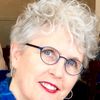For almost three decades I've lived here in Seattle on the Salish Sea and my apartment is like a glassed in aquarium. Often the waves are fierce and winds howling, so I sleep in my noise-canceling headphones. Our coasts have frequent tsunami drills. Last night, I was just about to brave my windswept bedroom, when news of the 8.9 earthquake and tsunami in Japan broke.
Long past midnight, I stayed awake, watching horrifying images of a tsunami wave cresting and flowing deep into farmland, cars and buildings like tiny toys bobbing about in the slow-motion flood.
"It's like watching a disaster movie -- but for real," the CNN reporter said.
Amidst all the video footage and tweets, I wished some more philosophical caller would have tweeted the Tao Te Ching (Stephen Mitchell translation),
"Nothing in the world is weaker than water,
But it has no better in overcoming the hard"
Water usually humbly follows the lay of the land, its tides are regular, dependable, its currents carry our human cargo and us from shore to shore. But when water rises up, it is a world-changer. That's why in almost every mythology, it was water that once destroyed a world in a great deluge. From the Bible stories of Noah and his ark to our local Skagit Northwest coastal tribe's story of a flood that rose so high it covered all but Mt. Baker and mighty Mt. Rainier -- water is the original stuff of life.
It's also a way of living. The ancient Chinese philosophy of Taoism, often called "The Water Way," believed water was the most revered teacher. Lao-tzu, the sixth-century B.C. master whose Tao te Ching is still a classic, wrote long ago:
"The highest good is like water,
for the good of water is that it nourishes without striving."
Witnessing this life-changing and terrifying tsunami as it drowns coastlines in Japan, it's difficult to remember how water can be "good." And yet, it is water that nourishes our bodies, our lands, and our souls. Our human bodies are mostly water. Dwelling inside us are individual, inland seas that ebb and flow -- from the blood, to the cranial sacral fluid, to the water that hydrates us.
To the Taoists, water's intuitive, harmonious flow was wiser than the rational attitudes of a linear, man-over-nature mind. Thus according to the ancient Taoist Kuan-tu, "the solution for the Sage who would transform the world lies in water."
Our present day willfulness has taught us much about our own separate selves and little about how to live wisely and at one with our world. A world that is mostly water.
Here in the Northwest, where so much of our life is linked with water, where the Asian influence is keenly felt -- where we await the tsunami from Japan to hit our own West Coast -- we have a chance to not just react or stare numbly at the CNN screen, but to contemplate this Tao or Water Way.
Besides the devastation and despair that such a disaster brings us, does it have any meaning? As we witness the power and force of rising seas, can we now begin to grapple with making changes in our lives to finally face and adapt to global warming?
Today tsunami warnings are sounding along the Oregon and Washington coasts. On our local Northwest Cable News station, we coastal dwellers are advised to head to high ground. Cameras on the beach show eerie low and high tides rise and fall in minutes, not the usual hours. The world seems out of synch. In fact, a geology expert tells us, the Japan Islands earthquake has actually wobbled the North Pole on its axis; and the planet is a little flatter.
Everyone on our Northwest Pacific Rim coasts knows to never turn our backs to the ocean. Every year sneaker waves sweep beachcombers out to drown at sea. But this tsunami is "like sneaker waves on steroids."
Still some people wander the beaches, thrill seekers - or just clueless.
"Foolish, foolish people," the geology expert on the Oregon television station says.
One of my friends in New York city calls to see if I'm okay. At the end of the call she comments, "We never want to be on the wrong side of nature." Her voice is soft, haunted. She's been watching the CNN coverage of the Japan earthquake and tsunami all day.
What should we do, we wonder. Go to our scheduled meetings? Go stand in line and buy an iPad2? Business as usual?
"Of course, somebody on the radio is talking about End Times... " I say.
"Well, maybe the Mayan calendar is right," she wonders.
"Are you going to keep watching?" I ask.
"I think we should witness this," my friend says firmly. "Keep those who are suffering in our thoughts. And try to learn -- something."
More than volcanic fire and wind, earth is sculpted by water. Perhaps then, it is from water we can at last learn how to shape ourselves in its image. To find inside our own watery selves, a way to live in harmony with the way of the world -- which is water.
Brenda Peterson is a novelist and nature writer, author of Living by Water: True Stories of Nature and Spirit. Her recent memoir, I Want To Be Left Behind: Finding Rapture Here on Earth is one of The Christian Science Monitor's Top Ten Best Non-fiction Books of 2010. www.IWantToBeLeftBehind.com
